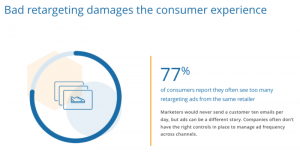There are at least 75 noteworthy professional conferences hosted this year for journalists and journalism educators. Those are journalism-specific conferences. That number doesn’t even include conferences in related disciplines like public relations, social media, marketing, or blogging. There are hundreds of conferences a year in just this one profession, and I wish I could attend them all.
You read that correctly. I would conference all of the time if someone would pay me to do so. Sadly, I have not been able to identify that job. Also, I think my husband, children and dogs would miss me if I traveled non-stop.
I love conferences so much because I’m a nerd. I love learning. And, if you’re going to learn, it might as well be from the experts in the field.
Fortunately, I don’t actually have to attend all of these conferences to learn from them. I follow them (and their attendees) on Twitter and learn vicariously. True, virtual conference attendance isn’t the same as being there in person, but it still is an opportunity to learn and network.
As a journalist, you can learn about your craft from monitoring conference tweets. You also can help your staff learn vicariously by tweeting and encouraging them to tweet conferences they attend.

When tweeting conferences, it’s best to think of it as a before, during and after process, and complete each stage accordingly.
Before
The before conference stage is all about preparation. Here are things you should do before the conference to maximize the online experience:
- Follow the official account. Many conferences set up a Twitter account just for that event. Search and see if you can find one on Twitter or listed on the conference website. Follow the official conference Twitter account, if there is one to keep from missing any conference-related announcements.
- Discover the hashtag. Most conferences today have hashtags to indicate tweets being sent about and from the conference. The hashtag should be on the conference website and other promotional materials. Use the official hashtag in all of your conference-related tweets. Also, follow it for tweets from conference organizers and other attendees.
- Follow others. As you begin following the conference hashtag, you will see tweets from conference organizers, speakers and attendees. Connect with them before the conference by following them and introducing yourself. It probably also is a good idea to create a list of those conference-related followers. This will make it easier for you to tag them when you’re live tweeting the actual event.
- Promo your coverage. It doesn’t do a lot of good for you to live tweet a conference if no one knows you’re attending or why they should care about the information. Promote your conference coverage plans through a series of tweets telling when you’ll attend and the type of information you anticipate offering. Encourage your followers to check out the hashtag and follow your tweets.
- Prep your gear. Live tweeting tends to be fast and constant. You’ll want to have all of your gear ready to go. People have varying preferences when it comes to their tools. Here are mine:
- iPhone – I tweet from my phone. Many people are surprised by this, but it’s fastest and most convenient for me. You can use a laptop, tablet or phone. Just choose the device that works best for you.
- Chargers – I make sure my iPhone and my Mophie Juice Pack are fully charged and ready to go. My Mophie can fully charge my phone again, if necessary. I also keep my charged iPad in my handbag, just in case. Whether you’re using a laptop or other device, be sure to bring charging cords and perhaps a small extension cord.
- Twitter client – There are various apps or programs to use for live tweeting. I typically use Twitter or Tweetbot. Many other people use Hootsuite. It’s really about personal preference, but you should try them out and determine which you prefer before you attend the conference.
- Notebook and pens – Carry a notebook and pens to take notes on things you don’t tweet.
- iPhone – I tweet from my phone. Many people are surprised by this, but it’s fastest and most convenient for me. You can use a laptop, tablet or phone. Just choose the device that works best for you.
During
Woo Hoo! It’s conference time! You prepared carefully, so it’s time to put your plan to work. Here are tips for tweeting at the conference:
- Attend as many interesting sessions that are applicable to your audience as possible. You want to get the most from the time you’ve invested, for you and for your audience.
- Introduce your followers to each session and its speakers before the session begins. Be sure to tag the speakers in those tweets.
- Use the conference hashtag on every tweet. Don’t forget also to follow the conference hashtag and retweet others.
- If you are quoting a speaker directly, be sure to put quote marks around the quote and tag the speaker.
- Keep your tweets professional and use proper grammar and spelling at all times.
- Add context to the discussion, which may include links or personal thoughts. Be sure it’s apparent that these ideas do not belong to the speaker.
- Add photos and videos of the event to make your tweets more interesting and visually appealing.
- Continue following others at the conference and engaging with followers who comment on your tweets.
- Don’t forget to continue promoting and explaining your coverage. In other words, tell your followers why you’re tweeting so much and what they’ll get from paying attention.
After
As they say, all good things must come to an end and that includes your fabulous conference experience.
When the “after” stage begins depends on your needs and those of your followers.
You may decide to write daily blog or Storify posts of your conference-related tweets. You may choose to do those after each session. Do whatever makes most sense for your audience’s needs.
I also recommend that you debrief from the conference by having a brief in-person session to educate your team about what you’ve learned and what next steps you recommend as a result of this new information. The session helps the entire team benefit from one person’s experience.
Lastly, send specific direct messages to each person you engaged with a lot or had a face-to-face conversation with at the conference. Thank them for the experience and plan your next contact, if desired.
Following these steps will help you and others get the most out of your conference experience. If every person on your team follows this advice, your organization will benefit greatly from all that is learned and shared.
photo credit: Alexia Tsotsis, Writer, TechCrunch, Brett Hurt, Founder & CEO, Bazaarvoice, & Mikkel Svane, CEO, Zendesk @ LeWeb 11 Les Docks-8889 via photopin(license)
Digital & Social Articles on Business 2 Community(114)
Report Post




